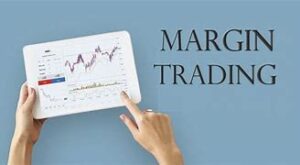Margin And Margin Trading Explained
Introduction
Margin is the amount of money that a trader needs to deposit in their account in order to open and maintain a position in the market. It is essentially a form of collateral that is required by brokers to cover any potential losses that may occur from trading.
Margin trading is when a trader uses borrowed funds from a broker in order to trade with larger positions than they would be able to with just their own capital. This allows traders to potentially increase their profits, as they are able to trade larger amounts without using their own funds.

However, margin trading also comes with increased risks, as losses can exceed the initial investment due to the leverage provided by the broker. Traders must be careful when using margin to ensure they are managing their risk effectively and not taking on more than they can afford to lose.
Importance
It is important for traders to understand the concept of margin and margin trading before engaging in these activities, as they can be complex and risky. It is recommended that traders have a solid understanding of risk management and have a clear trading plan in place before using margin trading to avoid significant losses.
Margin trading is a practice used by investors to leverage their investments by borrowing money from a broker to trade financial assets. This form of trading allows investors to buy more securities than they would be able to with just their own capital. However, while margin trading can amplify gains, it also amplifies losses, making it a high-risk strategy that requires careful management.
One key concept
To understand in margin trading is the margin itself. Margin refers to the amount of money that an investor needs to put up in order to open a position using borrowed funds. This initial investment acts as a form of collateral for the broker, ensuring that the investor’s account remains solvent even if the trade goes against them. The margin requirement is typically expressed as a percentage of the total value of the trade, known as the margin requirement ratio.
For example, if an investor wants to buy $10,000 worth of stock on margin with a margin requirement ratio of 50%, they would need to put up $5,000 of their own capital as collateral. The remaining $5,000 would be borrowed from the broker. This means that the investor would have $10,000 of buying power to use for trading.
Margin trading
Allows investors to amplify their gains by using leverage. Leverage is the practice of using borrowed funds to increase the potential return on an investment. In the previous example, if the stock price goes up by 10%, the investor would make a $1,000 profit on their $5,000 investment. However, because they were trading on margin and had a buying power of $10,000, the total profit would be $2,000, resulting in a 40% return on investment.
While margin trading can increase potential returns, it also comes with greater risks. If the stock price goes down instead of up, the losses can be amplified just as quickly. In the example above, if the stock price were to drop by 10%, the investor would lose $1,000 on their $5,000 investment. However, because they were trading on margin, the total loss would be $2,000, resulting in a 40% loss on the investment.
To protect against losses and manage risk
Brokers enforce margin calls. A margin call is a demand from the broker for the investor to deposit additional funds into their account to meet the minimum margin requirement. If the investor fails to meet the margin call, the broker may liquidate their position to cover the losses. This can result in further losses for the investor and potentially lead to the depletion of their account.
Margin trading is not suitable for all investors and should only be used by those who understand the risks involved. It requires careful monitoring of positions, risk management strategies, and the ability to withstand potential losses. Investors should also be aware of the costs associated with margin trading, such as interest on borrowed funds and fees charged by brokers.
Despite the risks
Margin trading can be a powerful tool for experienced investors looking to maximize their returns. By using leverage, investors can amplify gains and potentially achieve higher profits than with traditional investing. However, it is important to approach margin trading with caution and conduct thorough research before engaging in this high-risk strategy.
In conclusion,
Margin trading is a practice that allows investors to leverage their investments by borrowing money from a broker to trade financial assets. While it can amplify gains, it also amplifies losses, making it a high-risk strategy that requires careful management. Investors should understand the concept of margin, leverage, margin calls, and the risks associated with margin trading before engaging in this form of trading. By approaching margin trading with caution and conducting thorough research, investors can potentially maximize their returns and achieve their investment goals.
More learn top trading books